Bronze sculpture depicting a boy seated on a rock, raising a bare foot just above a crab raising its claws. It features a carved stone and gilt bronze base (in the form of classicist elements such as ribbons, garlands, etc.) upon which sits a wind-up clock with a white dial and blue Roman numerals for the hours and black Arabic numerals every five minutes. The clock also bears the inscription “Coupier Fila et Provart/ a Paris/ 100 Rue Amelot.” Coupier Fila et Provart was a company specializing in the manufacture of clocks and bronze elements (sculptures, appliqués, etc.) located in Paris in the late 19th century. The Parisian-style mechanism on the piece bears a hallmark on the bronze reading “medal de bronze / J. Marti et Cie.” ", in reference to another famous watchmaking company active in Paris (France) in the second half of the 19th century. The name "August Moreau" is engraved on the rock formation on which the child who inspired the sculpture sits. Auguste Moreau (Paris, 1834-1917) was born in Paris, the son of Jean Baptiste Moreau, also a sculptor, painter and draftsman, with whom he began his training. He continued his studies at the École des Beaux-Arts, which trained famous artists such as Henri Matisse and the sculptor Georges Gimel. His works were first exhibited in 1861, and he quickly became a renowned artist. He developed a distinctive style of filigree figures, highly detailed figures and busts.
Weight: 50.3 kg. Dimensions: 35 x 37 x 92 cm


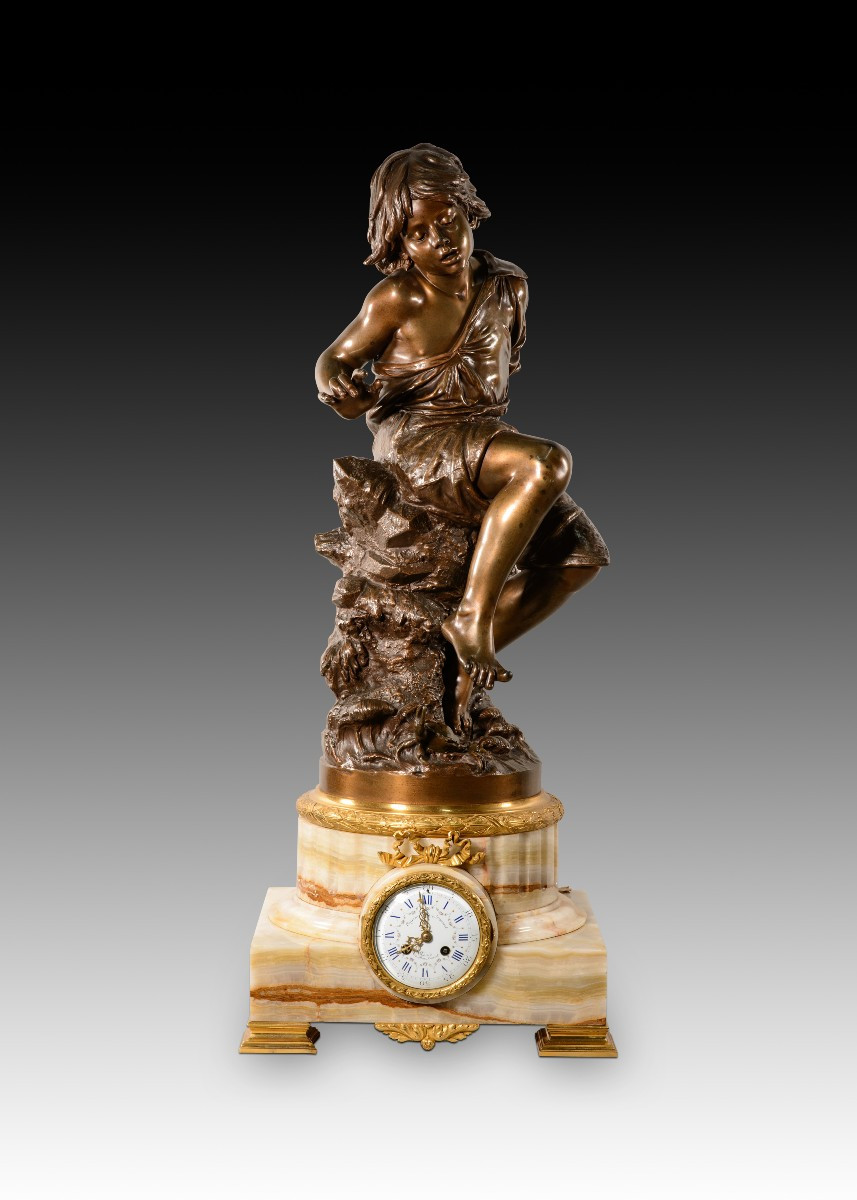
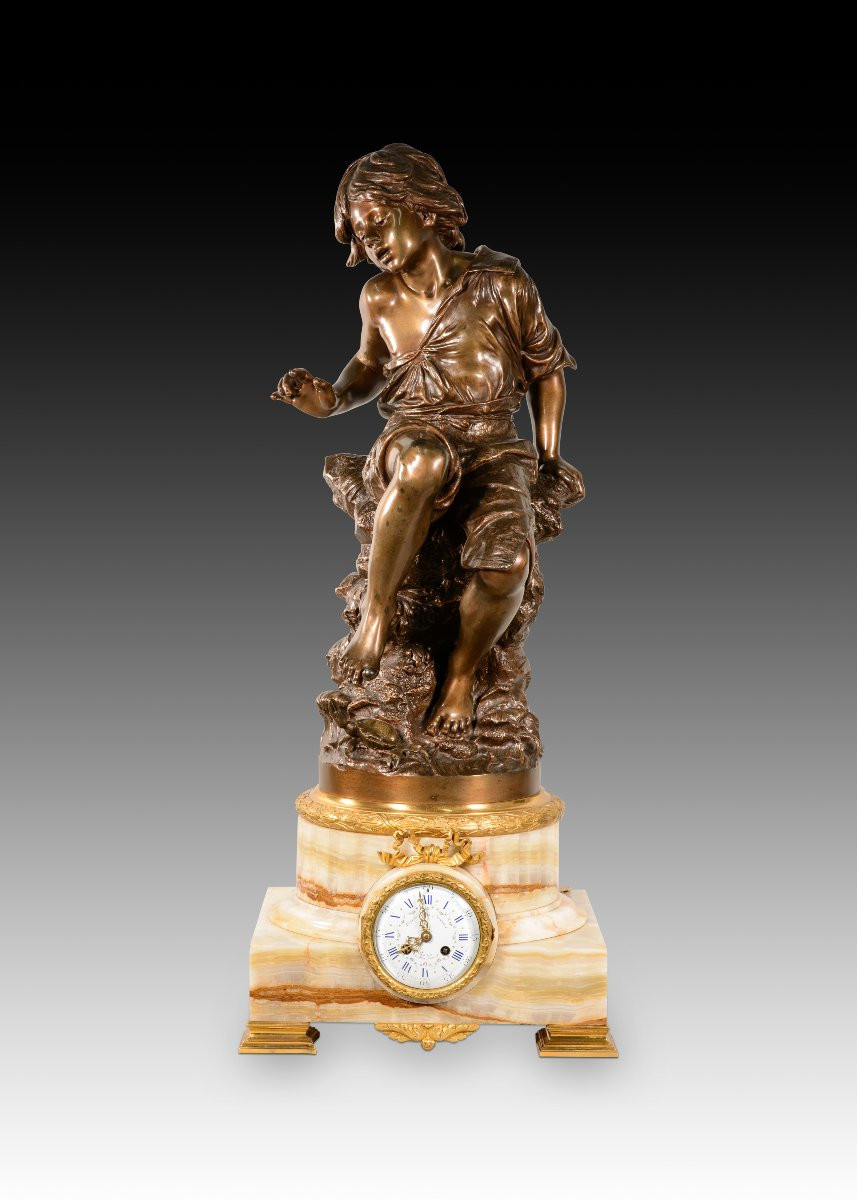
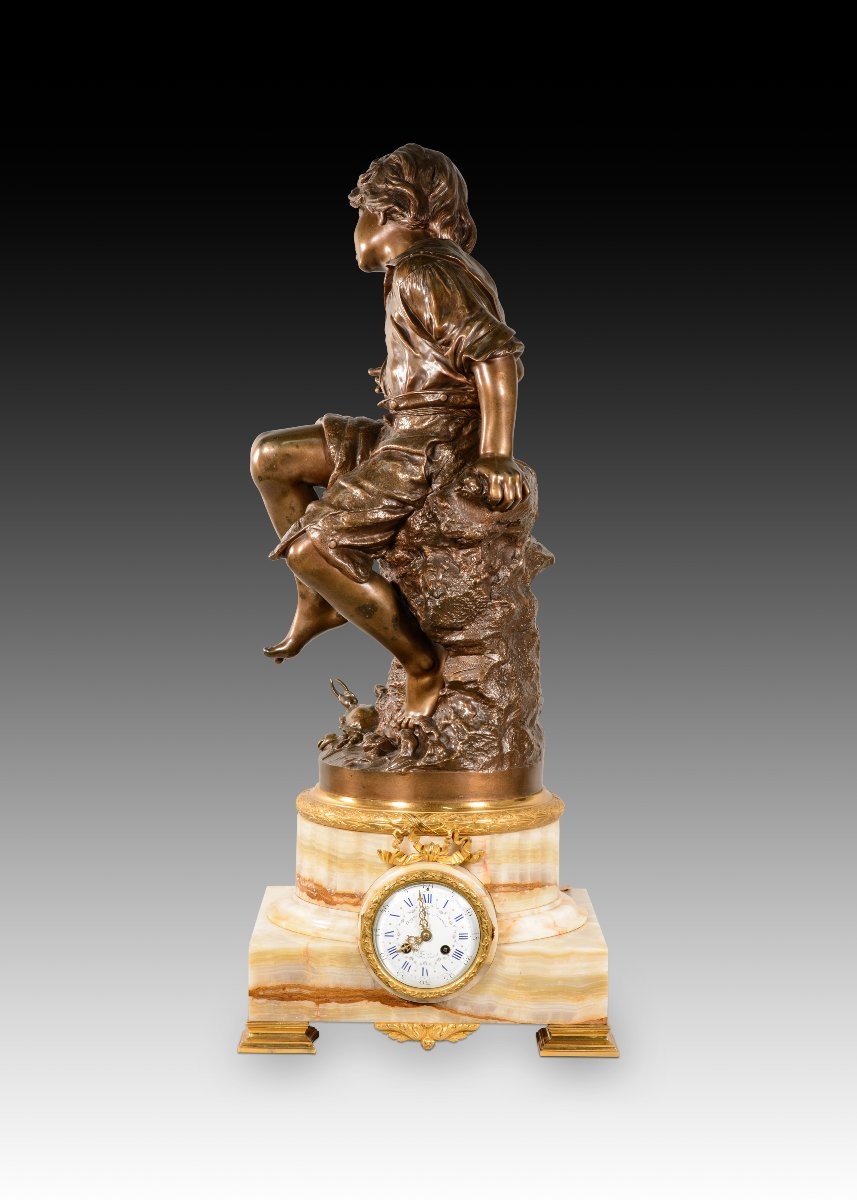
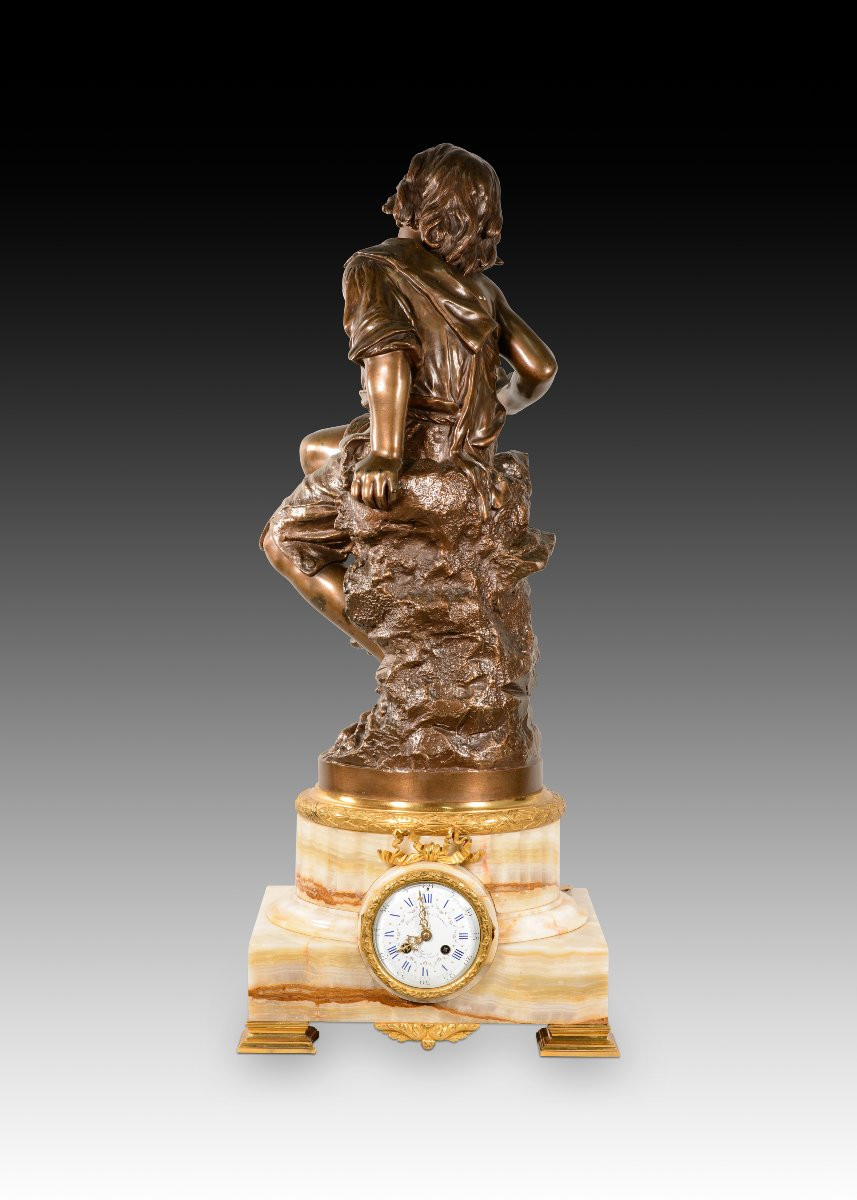



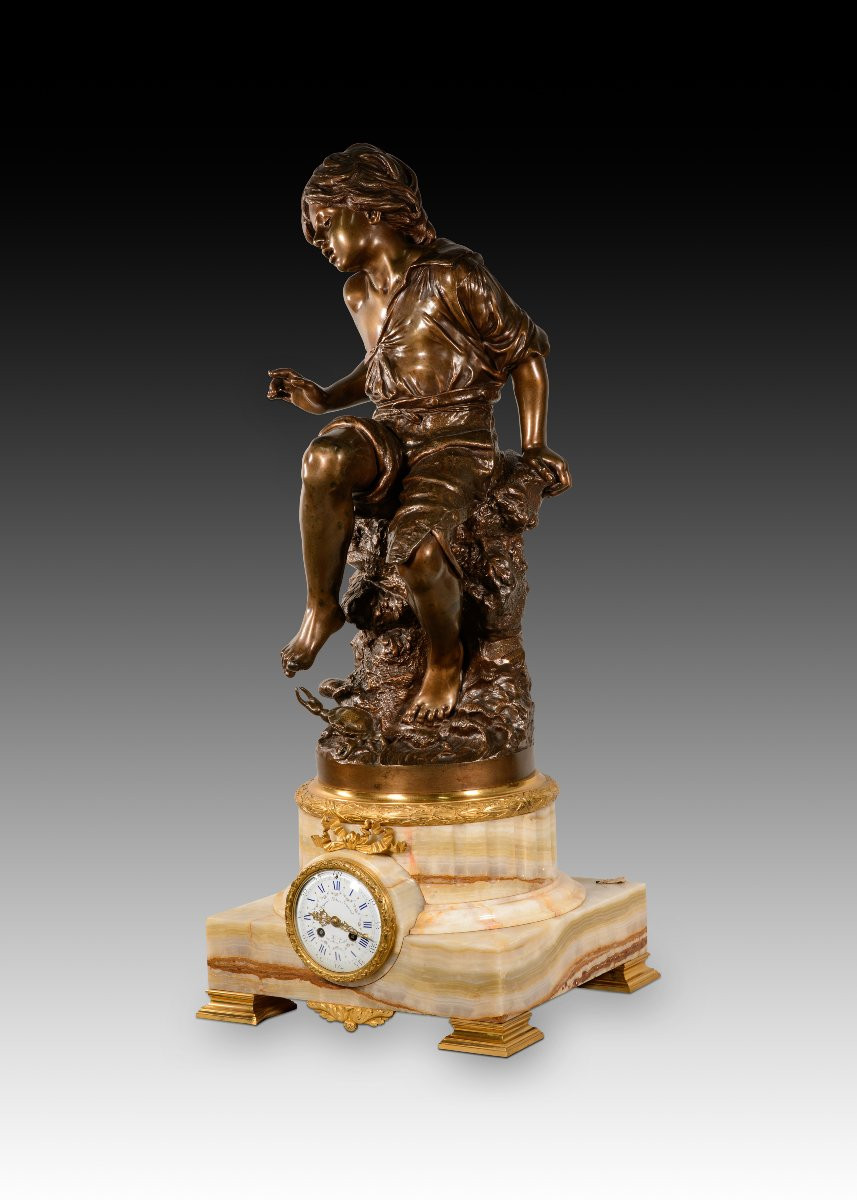
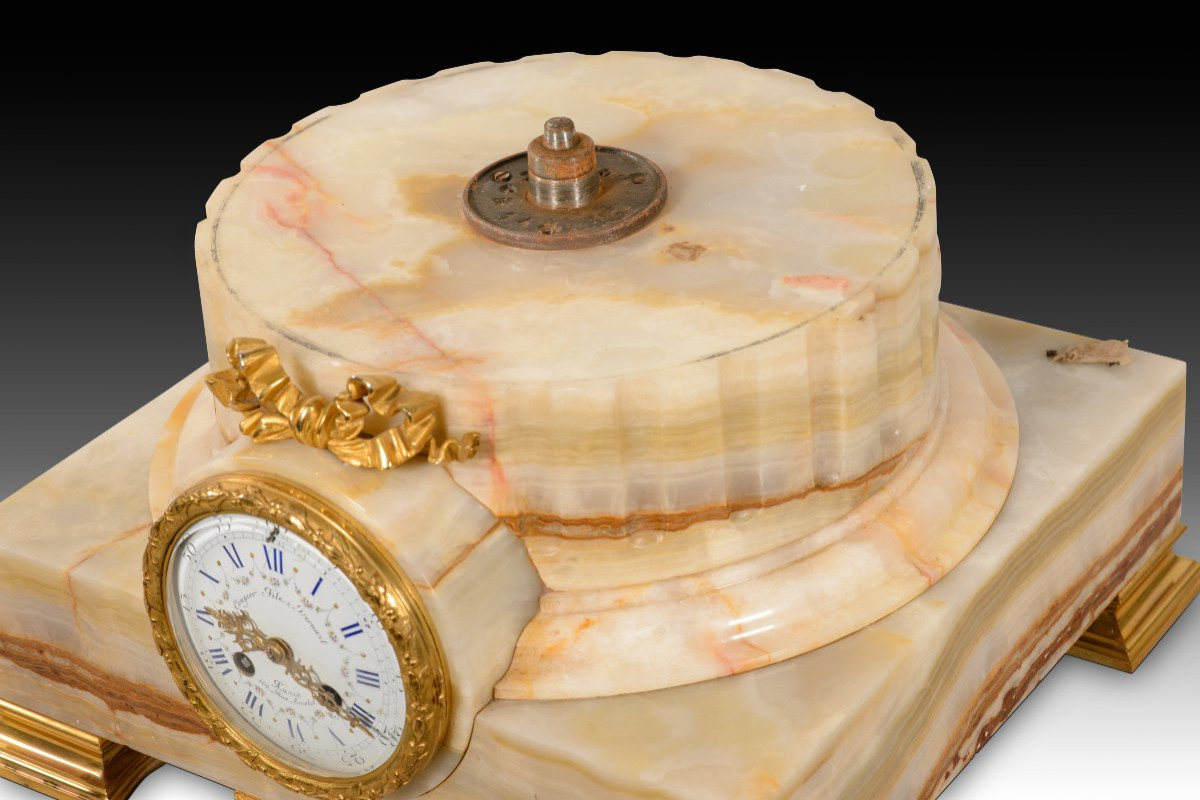
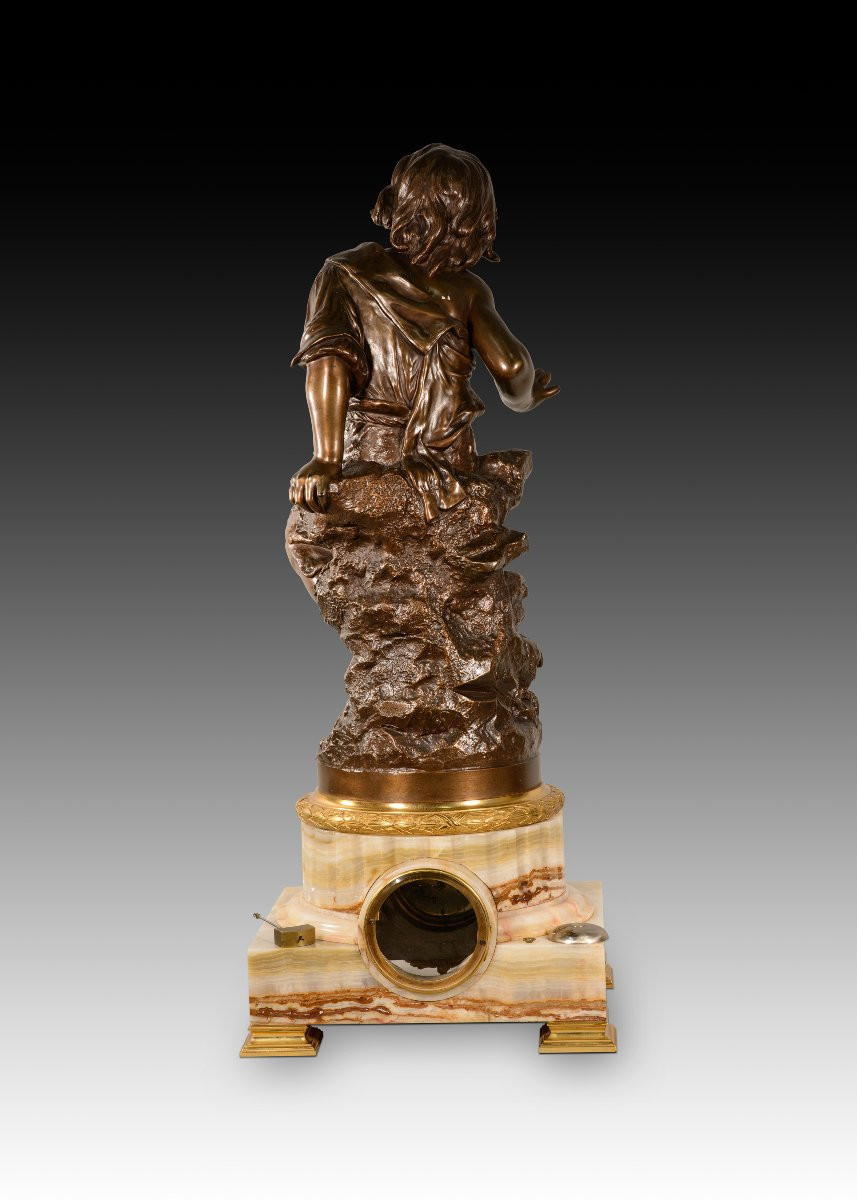
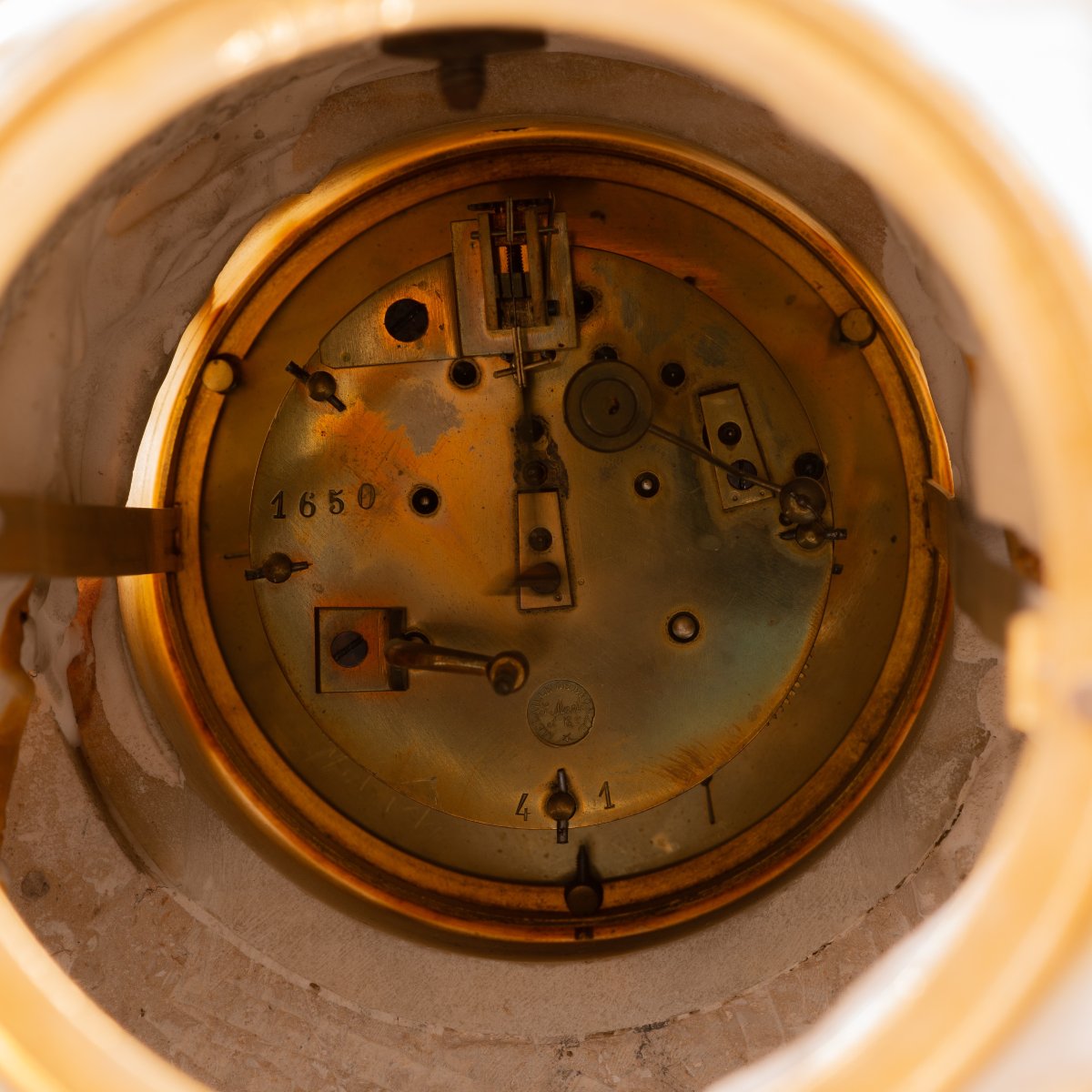






























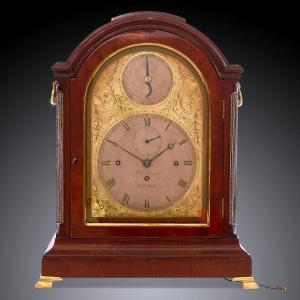




 Le Magazine de PROANTIC
Le Magazine de PROANTIC TRÉSORS Magazine
TRÉSORS Magazine Rivista Artiquariato
Rivista Artiquariato